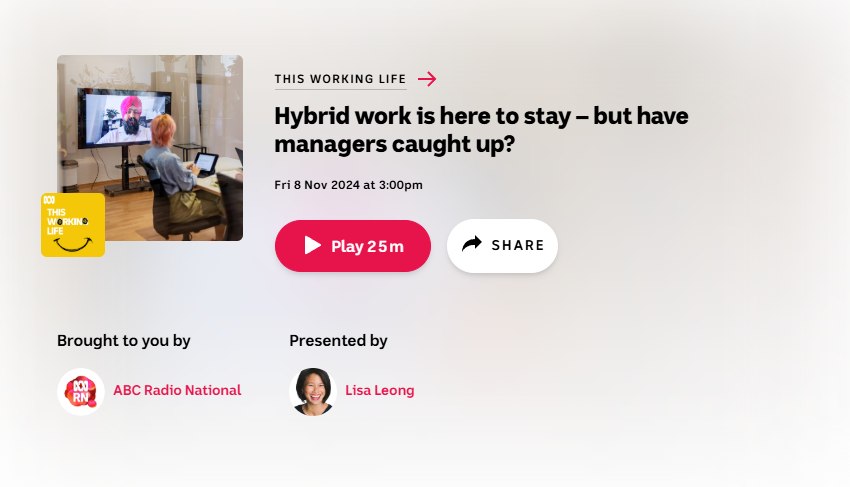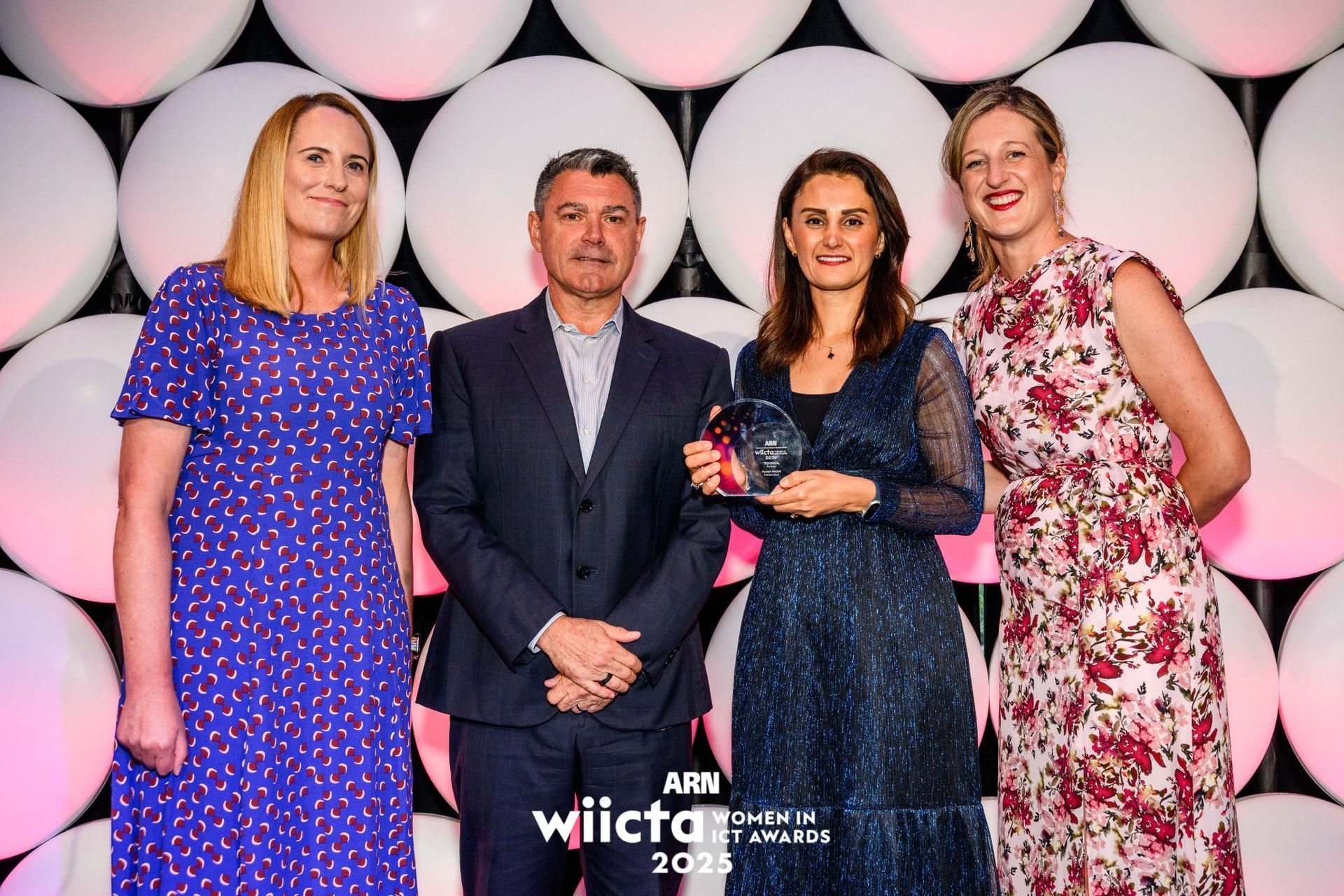Designed Up: What Happens When Design and Tech Actually Collaborate
Image credit: ThoughtWorks
What Can Happen When Design and Tech Actually Collaborate?
At PZ, we’re always exploring how design and technology can better complement each other. We recently hosted a Lunch & Learn featuring Emma Carter, Experience Design Leader and author of DesignedUp, whose talk was a candid, experience-rich exploration of what it takes to create great products, and even better collaboration between disciplines.
Emma’s career spans over 20 years and several countries, having started in a small UK village and eventually landing in Australia. Along the way, she’s built design businesses, worked with global organisations, written books, and taken some memorable detours, including training non-designers to conduct customer interviews and running creative workshops with reluctant executives. Her journey, she explained, is typical of many designers: it’s nonlinear, exploratory, and built around saying “yes” to opportunities and figuring out the path along the way.
Work Together, Not in Silos
What stood out from the start was Emma’s belief that design is not a department but rather a way of thinking and solving problems. And the best solutions come not from working in silos, but from collaborative, interdisciplinary approaches. She made this point clear through several examples, but one story captured it best. Emma recounted being the sole designer on a team of 25, embedded in a client’s digital transformation effort. The client had never involved customers in the design process before and had historically produced “designs” by way of a manager sketching out UI ideas based on other platforms and handing them directly to developers. Emma helped change that.
With a deadline looming and only one iteration available for research and testing, she didn’t try to do everything herself instead, she rallied the wider team. She brought in people from delivery, marketing, and customer engagement who were interested in improving the customer experience. She trained them to conduct interviews and gather insights, pairing them with consultants who already had research experience. In just eight days, they conducted 19 customer interviews, logged over 300 observational insights, and held a co-design workshop. The result wasn’t just an MVP aligned with real user needs, it also helped prevent the development of a feature requested by an executive that users overwhelmingly rejected in testing.
This story served as a reminder that the impact of design isn’t about numbers on a team. Emma pointed out that designers are often outnumbered in tech companies but that doesn’t mean their voice can’t be the most powerful in the room. By connecting the design process to business outcomes, showing the value of user insights, and aligning with what stakeholders care about, designers can lead even when they’re the minority.
Learn Their Language
This isn’t just a designer’s challenge. Developers often find themselves in a similar bind: full of technical insight, but unsure how to frame it in a way that resonates with executives. Emma highlighted that while developers and designers approach problems from different angles, what they share is a desire to solve them. The barrier is often language. Business leaders don’t necessarily care about code architecture or wireframe fidelity. But they do care about metrics like efficiency, cost savings, customer retention, and return on investment. Learning how to “speak business” can strengthen our ability to influence outcomes. Emma shared how she applied this when building a business case for a design system. Knowing the stakeholder she needed to convince was numbers-driven, she tailored her pitch accordingly. She framed the ask with specifics: $181,000 in investment would return $522,000 in savings (quantified through efficiency gains and reduction in rework). She even predicted the rising cost of tech and design debt over time if the system wasn’t built, supported with data from JIRA and backlog analysis. Her pitch worked because she translated design needs into delivery outcomes. This, she explained, is the level of strategic storytelling we need more of, in design and across disciplines.
Working together doesn’t stop with alignment on strategy. Emma stressed that real collaboration between design and development happens when they co-create instead of handing-off. Developers shouldn’t be brought in after a design is “done,” nor should designers be locked out of implementation discussions. When design and tech are both present from the beginning, they can spot risks early, build more scalable solutions, and create better user experiences. This approach isn’t just more efficient, and it’s more human.

Pick Your Battles
Convincing people to think differently isn’t always easy. Emma shared how she once facilitated a discovery workshop for a group of executive bankers who were openly resistant to co-design and refused to sketch. Rather than abandoning the exercise, she found a workaround: a quirky creative activity known as the “Silly Cow” exercise. Participants were given cow-related attributes and challenged to invent absurd businesses like “MooBa” or “Adopt-a-Cow.” This playful method completely changed the energy in the room. By the end, those same executives who initially resisted sketching were fully engaged, contributing creative MVP ideas and even shifting the project’s focus to a different part of the user journey. The lesson? Sometimes, creativity needs a nudge and the right activity can open up even the most sceptical minds.
Not every battle is worth fighting, though. Emma was transparent about the reality that there will always be the “1 percenters”; those people in organisations who simply don’t see the value of design or collaboration. Whether it’s the stakeholder who thinks designers just “make things look pretty,” or the manager who insists no one needs research because they already “know what users want,” these individuals can derail progress if you let them. Emma’s advice was clear: pick your battles. Know when to walk away, and when to push. Protect your time and energy for the work that matters and the people who want to do it with you.
Emma also explored how design contributes to internal business structures beyond just the product interface. From influencing workflows and onboarding journeys to mapping employee experiences and enhancing communication, design thinking plays a role in shaping how an organisation operates. If companies want to retain talent and innovate meaningfully, they can’t afford to limit design to surface-level aesthetics.
This extended into a discussion about executive priorities such as reducing waste, increasing revenue, expanding market share and how design (when strategically positioned) contributes to all of them. For example, implementing a thoughtful onboarding experience doesn’t just “look nice.” It reduces churn, improves performance, and increases loyalty. These are the stories businesses need to hear, because that’s the language they understand.
Emma closed her talk with some memorable quotes and personal stories and reminded us that not every path is smooth. But for those willing to keep learning, collaborating, and experimenting, the impact can be enormous.
Takeaways for Tech Teams
- Human-centred design isn’t just a “design thing”. Developers, testers, and PMs all play a role in creating better experiences.
- Business language matters. Learn to translate your work into the metrics and motivations your stakeholders care about.
- Designers don’t just make things pretty. They help teams focus on solving the right problems the right way.
- You don’t need a huge team to make a huge impact. With the right mindset and collaboration, even one designer can lead transformation.
Get curious, get creative, and occasionally get silly. A cow exercise might just unlock your next big idea.
If you’re looking to work better across design and tech, Emma’s insights are a great place to start. And if you haven’t already, we highly recommend checking out her book, DesignedUp, for more stories and strategies from the frontline of design leadership.
Share This Post
Get In Touch
Recent Posts





